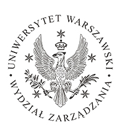ORCID
Wojciech Kuryłek: 0000-0003-0692-3300
Keywords
earnings per share, time series, random walk, ARIMA, financial forecasting, Warsaw Stock Exchange
Abstract
The proper forecasting of listed companies’ earnings is crucial for their appropriate pricing. This paper compares forecast errors of different univariate time-series models applied for the earnings per share (EPS) data for Polish companies from the period between the last financial crisis of 2008–2009 and the pandemic shock of 2020. The best model is the seasonal random walk (SRW) model across all quarters, which describes quite well the behavior of the Polish market compared to other analyzed models. Contrary to the findings regarding the US market, this time-series behavior is well described by the naive seasonal random walk model, whereas in the US the most adequate models are of a more sophisticated ARIMA type. Therefore, the paper demonstrates that conclusions drawn for the US might not hold for emerging economies because of the much simpler behavior of these markets that results in the absence of autoregressive and moving average parts.
Acknowledgments
The cost of editing selected articles published in the Journal of Banking and Financial Economics in the 2022– 2024 is covered by funding under the program “Rozwój Czasopism Naukowych” of the Ministry of Education and Science under agreement No. RCN/SN/0321/2021/1. Task title: “Verification and correction of scientific articles and their abstracts”. Funding value: 21 197,00 PLN; The task consists of professional editing of articles published in English.
Recommended Citation
Kuryłek, W. (2023). The modeling of earnings per share of Polish companies for the post-financial crisis periodusing random walk and ARIMA models. Journal of Banking and Financial Economics, 2023(19), 26-43. https://doi.org/10.7172/2353-6845.jbfe.2023.1.2
First Page
26
Last Page
43
Page Count
18
Received Date
24 January 2023
Revised Date
6 April 2023
Accept Date
25 April 2023
Online Available Date
11 May 2023
DOI
10.7172/2353-6845.jbfe.2023.1.2
JEL Code
C01; C02; C12; C14; C58; G17
Publisher
University of Warsaw


